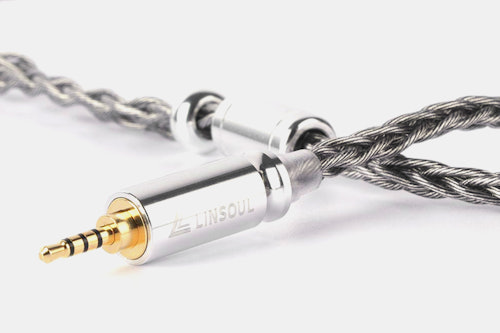Click to view our Accessibility Statement or contact us with accessibility-related questions VIEW 4 MORE
VIEW 4 MORE
 VIEW 3 MORE
VIEW 3 MORE
 VIEW 3 MORE
VIEW 3 MORE
Linsoul Nymph IEM Cable
Linsoul Nymph IEM Cable
bookmark_border
Where's the price?
To negotiate the best possible price for our customers, we agree to hide prices prior to logging in.
189 requests
·
250 Sold
Product Description
A quality cable is the next step to finding the perfect sound on your IEM. New from Linsoul, the Nymph IEM cable consists of 8 strands of 22awg 5N OCC single crystal copper, which is plated with 12 cores of silver and 7 cores of graphene coating, all of which are welded and braided in accordance with directionality Read More
Want to know something about this product or how to use it?
Ask the community!
Ask the community!
Sort by: Newest
keyboard_arrow_downNewYorkScribbler
9
Mar 6, 2021
Is this cable made from copper that was recovered from the Titanic, melted down with dragon fire and then blessed by the pope? Is that why $0.75 of copper costs $75 dollars?
yeknodathon
0
Mar 7, 2021
Reviews claim there has been an issue with the connector causing damage. Has this been resolved and does the MMCX connector conform to industry standards?
dsquaredduffy
10
Mar 8, 2021
I recently (within the past two months) purchased a different but similar MMCX Linsoul cable and it did in fact cause damage to my headphones. Extremely frustrating and disappointing. I was offered a refund for the cable itself, but was not compensated for my broken IEM. I would suggest avoiding these cables.

SuperShibe
29
Oct 22, 2021
So everyone says silver offers a bright sound signature, but what does graphene do? If anyone has done a blind A/B test of this versus an entirely OFC cable I would be interested to hear your opinion.
Victorfabius
105
Oct 28, 2021
Just to be the exception: silver doesn’t offer a brighter sound signature. There now not everyone says it.
Graphene, in this use case provides little to no value. Here’s why:
Graphene is a perfectly honeycombed arrangement of carbon atoms. The benefits it has is that - in theory - it’s incredibly strong, thin, and lightweight. It has an exceptionally high Young’s modulus (ref: https://depts.washington.edu/matseed/mse_resources/Webpage/Biomaterials/young's_modulus.htm). It’s also highly conductive, which is the more applicable concept for the cable.
The problem is that of limitation. Have you ever been stuck in traffic? Even on an expressway? Does traffic move faster or slower during rush hour? It doesn’t really matter if graphene is highly conductive if the other conductive material around it is less so. You can only go as fast as the car in front of you, and that’s true of conductivity here.
The other issue is that graphene is still difficult to produce, especially in large sizes. That increases the likelihood that the cable uses flaked graphene glued (or otherwise attached to a surface, though I will say ‘glued’ for expedience) to a surface. There’s no real regulation on what and how one can call something “graphene” these days. Now, it’s true these graphene flakes can actually increase the strength or flexibility of the material they’re attached to, but for a cable, it won’t address the weak points at the plugs.
In terms of sound, a pure graphene wire would sound the same as a pure copper or silver wire. Why? In order to reproduce sound, the headphone (IEM, in this case) gets a signal in the form of electricity. It takes two aspects of electricity, - the voltage and amperage, - to produce the sound you hear (one determines frequency, the other volume). If your cable is adjusting the electricity it’s supposed to conduct, then it’s either broken or had redefined physics to the extent that no electronics could ever work in any reliable fashion ever again.
The only way a cable would impact sound is if it either increases or decreases the impedance vs. another cable. This would also require an amp with either a high output impedance, a non-flat impedance curve, or both and an IEM (or headphone) with not only low impedance, but also a non-flat impedance curve. But the actual effect produced would be very small, especially with sensitive IEMs, where it might not be discernible at safe listening volumes, and the effect would vary based on the peculiarities of the IEM’s impedance curve.
A blind A/B test - conducted well - would very likely generate inconclusive results at best, when compared to another, functional cable.







